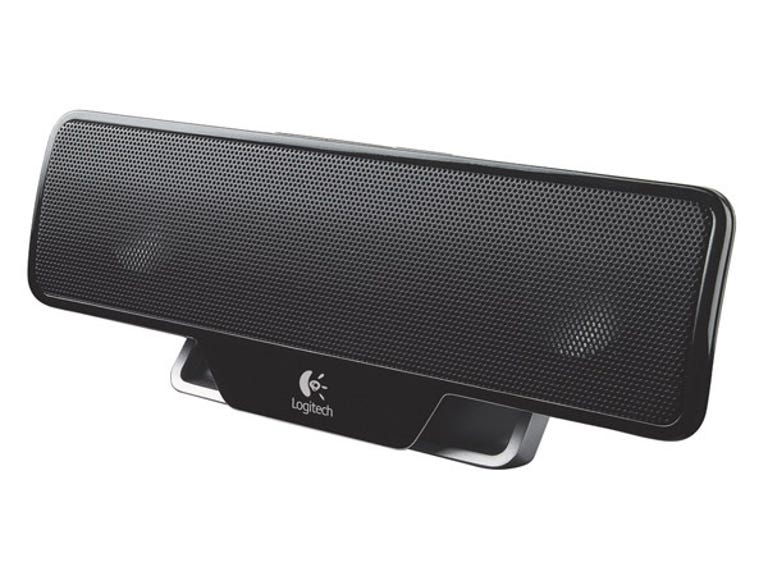 Why You Can Trust CNET
Why You Can Trust CNET Logitech Z205 USB Speakers review: Logitech Z205 USB Speakers
Super portable, with respectable sound, the Logitech Z205 USB speakers should find their place in the travel bag of a lot of notebook users.
Unlike most USB powered loudspeakers, the Logitech Z205 is a single unit, fed by a single cable. Rather than using USB-only for power, it acts as a USB audio device, so the sound remains in the digital domain all the way to the unit's amplifier, and perhaps beyond, as we'll get to in a moment.
The Good
The Bad
The Bottom Line
It is very portable, a lightweight unit that clips onto the top of your notebook's screen. At 180mm wide, it doesn't use much space either.
Logitech says nothing about the internal workings of this unit. You can see that there are two little speakers in it with what look like metal inverted domes 25mm in diameter. But power? Not mentioned. Claimed frequency response? Nothing.
For what it's worth, we'd guess that Logitech is using a so-called digital amplifier. Our 1kHz test signals revealed lots of noise spikes on odd harmonics all the way up to 19kHz, which tends to be diagnostic of digital amplification. That's not a complaint. The noise spikes are at such low levels (the worst is -40dB, or less than 1 per cent) as to be inaudible, and digital amplifiers are highly efficient.
Setup and cartage
Using this speaker couldn't be easier. You just clip it to the top of your notebook screen and plug the USB cable into it at one end, and the computer at the other. The cable is long enough to cope with most computer arrangements, but not so long as to become a tangle. On a Windows 7 notebook, it set itself up as a USB Audio device in a minute or so, and took over sound duties from the computer without further prompting.
There was one weakness in practicality, though. Since it takes over the computer as the USB device, you will have to unplug it from the USB to be able to use headphones. Another minor issue: the spring grip on the bottom is of a sensible strength, and the padding is adequate to avoid doing damage, but it will obscure the webcam on most notebooks, so it needs to be offset if you're Skyping.
As for taking it with you, for this it is ideal. It weighs a tiny amount and packs up into a plastic pouch for travelling.
Performance
This speaker sounds a little less balanced than it ought to because, we suspect, of a peculiarity in tuning. The tonal balance of a speaker isn't determined so much by the narrow band peaks and troughs in its frequency response, but rather the average level of broad swathes of frequencies. The frequency performance of this speaker is in two clear bands. The two octaves from about 2200 hertz to 10,000 hertz are reasonably even in level, but are a clear four or five decibels higher in level than the three octaves between 250 hertz and 2000 hertz. That makes the sound bright, but also a bit thinner than it ought to sound. If those two bands were aligned, the sound would be remarkably uncoloured, but that might come at the expense of volume level.
At both extremes the output fell away. At the top end there was a 'shoulder' in the response at 10,000 hertz, and the output fell fairly evenly away to be down by over 20dB at 20,000 hertz. At the bass end the roll off was gentler, falling away below 250 hertz to be about 15dB down at 120 hertz, and then basically disappearing.
Nonetheless, music was delivered reasonably cleanly, without marked colour and hinted at enough upper bass/lower mid-range to sound like it had a decent beat. The test podcast was clean and coherent, with a tendency to a little buzziness due to flaws in the recording being emphasised by the system's frequency balance. It also seemed to produce a reasonably high subjective volume level, although things tended to become a bit confused with the test song from Muse.
Conclusion
Super portable, with respectable sound, the Logitech Z205 USB speakers should find their place in the travel bag of a lot of notebook users.


